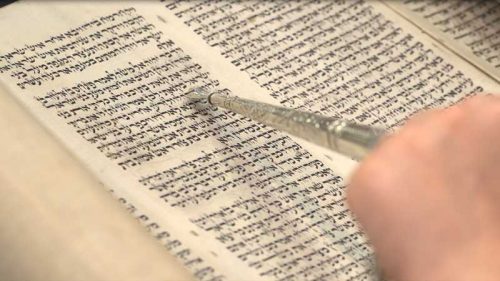There are over a million different people in the world who practice Judaism, but the word Talmud means different things to different people. To some, it is just another book of law, but to others, it is more than that. The Talmud has had a profound impact on Jewish culture for thousands of years and continues to do so today.
Torah is the first five books of the Hebrew Bible, and the Talmud is a compilation of commentary on those books. The Talmud is written in Hebrew, but the commentaries are written in Aramaic. So what are the other differences between Talmud and Torah?
The article will focus on the Talmud and Torah, the difference between the Talmud and Torah, and how they are used today.
Summary Table
| Talmud | Torah |
| Is a commentary on the Torah | Is the first five books of the Bible |
| Consists of 63 tractates and around 9,000 pages | Consists of five books and is around 2,500 pages |
| Compiled by the rabbis in Babylonia around 600 CE | Was given to Moses by God on Mount Sinai around 1313 BCE |
Definitions

What is the Talmud?
The Talmud is a book of Jewish law. It contains two types of material: Halakha and Haggada. Halakha is the legal part of the Talmud. It contains rules about how to live as a Jew, what to do in certain situations, and how to follow Jewish law. Haggada is the non-legal part of the Talmud. It contains stories about the Jews, poetry, and moral lessons. The name “Talmud” comes from a Hebrew word that means “study.” The word “Talmud” can refer to either the whole book or just one section of it. The section that we are referring to here is the legal part (Halakha). There are two versions of the Talmud: The Babylonian Talmud and the Jerusalem Talmud. These are different versions of the same book written in different languages by different people at different times in history. They are similar, but they have differences in their text and their order of presentation. Today, only scholars can read them because they are written in Hebrew and Aramaic with no punctuation or vowels.
What is the Torah?
The Torah is the first five books of the Bible. It contains the story of how God created the world and how God told the Jews to be a holy nation. The word “Torah” comes from a Hebrew word that means “teaching.” The Torah is also known as the Pentateuch (five books). The Torah also contains laws about how to live as a Jew, stories about Jewish history, and moral lessons.
How are Talmud and Torah used today?
Today, Talmud is used in religious Jewish schools for teaching Jewish law. It is also used by Orthodox Jews when they pray three times a day (morning, afternoon, and evening). They will say prayers from different parts of the Talmud while they are praying. There are also many rabbis who study Talmud for their entire lives and write commentaries on it. The same is true for Torah; it is used in religious Jewish schools for teaching Jewish law and it is read every week at synagogue services. In addition, many rabbis write commentaries on it as well.
Talmud Vs. Torah
There are many differences between Talmud and Torah. Here are some of them:
1. The origin
Talmud is a compilation of oral traditions and commentaries from ancient times. It was compiled by the rabbis in Babylonia, around 600 CE. The most important Jewish book, it is written in Mishnaic Hebrew and Aramaic. It consists of 63 tractates (sections) and covers a wide range of topics including law, ethics, philosophy, customs, history and lore.
Torah is the first five books of the Bible. It is written in Hebrew and is also known as Pentateuch or Pentateuchal Torah. The Torah was given to Moses by God on Mount Sinai around 1313 BCE. The Torah consists of two parts: 1) The Five Books of Moses or Five Books of Moses; 2) the Prophets which includes Nevi’im (Prophets) and Ketuvim (Writings). The Torah has been passed down orally from generation to generation since its inception but it was not written down until the 7th century BCE. However, it wasn’t formally compiled until the 3rd century CE in Israel.
2. The number of books
The Talmud consists of two parts: the Mishnah and the Gemara. The Mishnah is the text that contains the oral traditions and commentaries of the Torah. The Gemara is a commentary on the Mishnah. The Talmud consists of 63 tractates (sections) and each tractate contains a number of chapters or Perakim (in English, chapters). There are 613 commandments in the Torah, which are discussed in detail in the Talmud.
In the two parts, the Torah consists of five books: Genesis, Exodus, Leviticus, Numbers and Deuteronomy. Each book contains many chapters. The Torah is written in Hebrew.
3. Size
The Talmud consists of 63 tractates and around 9,000 pages. The entire Talmud is about the size of 30 regular sized books. The Torah consists of five books and is around 2,500 pages.
4. How they are used
The Talmud is studied as part of the daily Jewish religious study. In synagogues, the Talmud is read and discussed during morning prayers on Mondays, Thursdays and Saturdays. The Torah is read every week in Jewish homes. On a Sabbath, it is read in synagogues.
5. Textual analysis
The Talmud is a commentary on the Torah. It analyzes and interprets the Torah. The Talmud contains the discussions of many rabbis, including Yohanan ben Zakkai, Eliezer ben Hyrcanus, and Judah ha-Nasi.
The Torah is the first five books of the Bible. It is a collection of laws and narratives given to Moses by God. The Torah is not organized in a chronological order.





